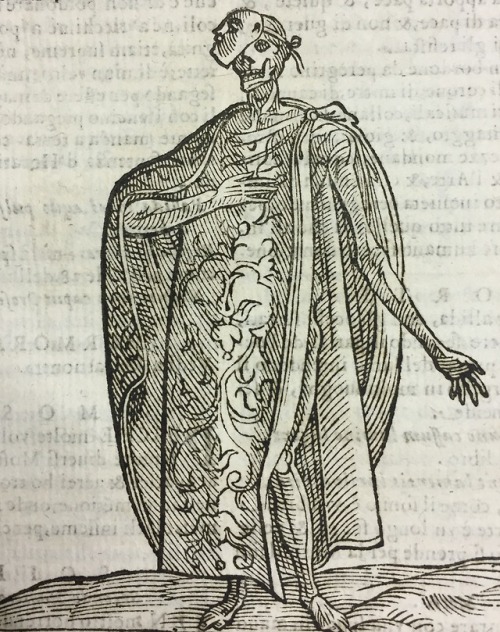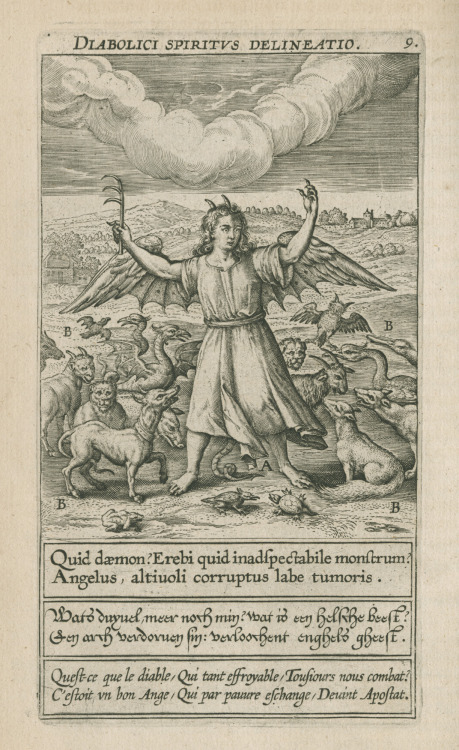#emblems
After looking through slideshows of last night’s Met Gala, I was determined to find a truly impressive outfit of the day in our special collections. But in my attempts to choose a favorite, I couldn’t decide between these three amazing hats from Wilson Library’s 1625 copy of Della novissime iconologie.
Whateveryour particular favorite Renaissance fashion look might be, it’s clear that all three of these early modern emblems are absolute style icons.
Post link
Christeliicken waerseggher, illustrated by Cornelis Galle and printed by Jan Moretus, is a 1603 Dutch translation of the well-known emblem book, Veridicus Christianus by the Jesuit Father Jan David. An emblem is essentially a picture used to portray an idea or teach a lesson, in this case religious or moral, and is usually accompanied by a motto and verse (here the motto is in Latin on top of the image and verse in Latin, Dutch, and French on bottom). One image shows different interpretations of the crucifixion portrayed by artists (including one heretical portrait being painted of a demon on the bottom left). The last image is of a man’s head seen as a house warning the viewer of the risks of opening one’s senses to temptation (”greedy prying eyes”). In the background is Eve with an apple (letter A), David watching Bathsheba in the bath (letter B), and Lot’s wife just before turning into a pillar of salt with Sodom in the background (letter F).
Newberry call number: Wing ZP 6465 .P675
Post link
The Vulcan salutation is such an iconic feature of the Star Trek universe that it has its own Wikipedia page and was added to the Unicode emoji set (). There are many ways to build a fictional reality, and gestures are one way of doing this.
These gestures are often Emblems, a type of gesture that has a fixed form and a fixed meaning for the group that use them. Gestures are distinct from performing magic or Jedi mind tricks, which in the fictional world are technically actions. There’s also this fun paper that looks at the way people in scifi use gestures to interact with computers and technology.

The intentional use and fixed meaning of emblem gestures mean that they can take on a life outside the fictional world. For example, here’s European Space AgencyastronautSamantha Cristoforetti in 2015 on the ISS, in a final salute to Leonard Nimoy.

Perhaps the most fascinating example of an emblem gesture extending beyond fiction in recent times has been the emergency of the three fingers salute from the Hunger Games books and films. This gesture has been used in pro-democracy protests in countries including Hong Kong, Thailand and Myanmar. The image below is from the 2021 protests in Myanmar.

These examples got me thinking about emblem gestures in other fantasy and scifi worlds. A recent one that came to mind was the two fingered blessing from Emperor Cleon in the television version of Foundation. Iconic enough in-world that statues of him are positioned using this gesture. It has a long history in Greek rhetoric and Christian iconography.
There’s a rude hand gesture in P.M. Freestone’s Shadowscent books - two fingers raised in a backhanded V, which parallels the Up Yours gesture in the UK and Australia, but also fits the in-world context as the offensive act is to plug someone’s nostrils (the hight of rudeness in a scent-focused world!).
I’m sure there are others too. I’ll undoubtedly start noticing them and add them to this post! (if you have any examples, I’d love to hear from you!)
Claude Paradin
The accompanying motto to this emblem is “Vis nescia vinci” or “Force that cannot be overcome with force.”
Source:French Emblems at Glasgow database,Penn State University Libraries Digital Collections
Post link










